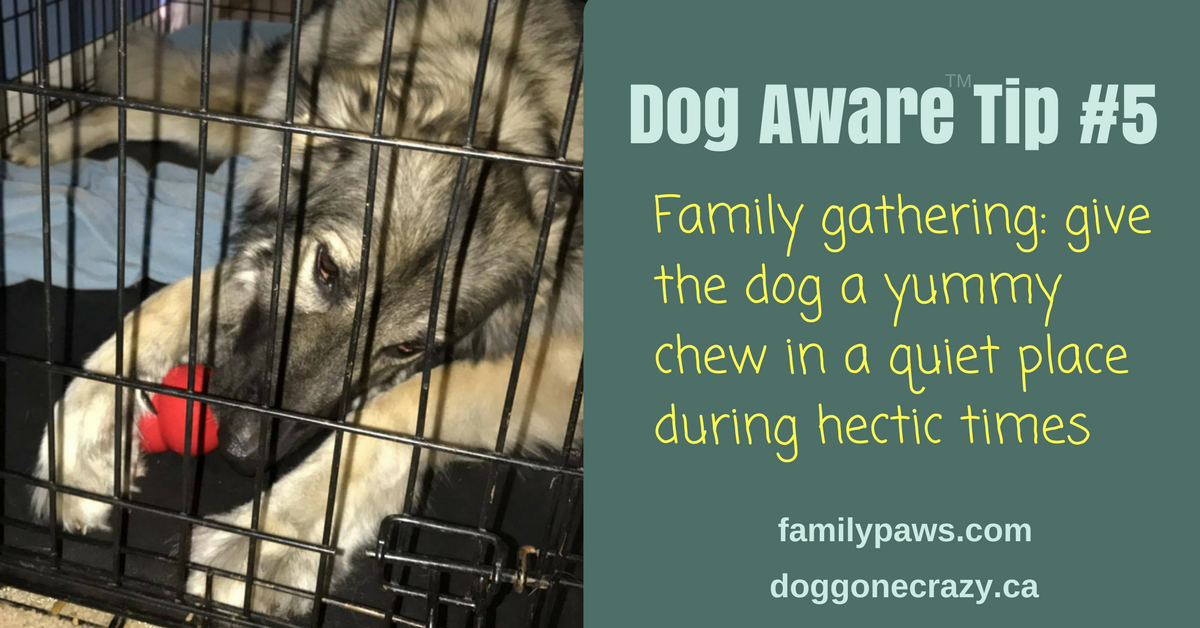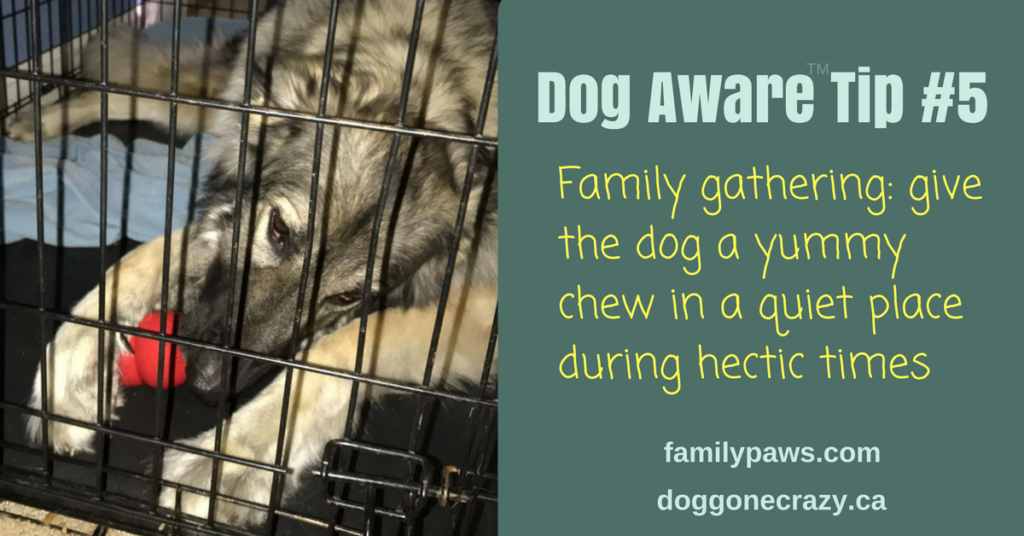Gatherings at a friend or relative’s house are the source of fond memories for many. The family dog may not enjoy these events as much as everyone else. Changes in routines, crowded rooms, unattended food and excited children can often lead to miscommunication between the family dog and guests. A stressed dog may be pushed to the limits of his tolerance and may feel he has no option but to defend himself. This is especially true of Grandma’s dog, who is used to a quiet and peaceful household. Even a normally calm and docile pet may become stressed and anxious under the extreme circumstances of a boisterous family celebration. Supervision may be lax if each adult thinks that another is watching the children. Children are the most likely victims of dog bites in this situation. Here are some tips to keep kids and dogs safe during family gatherings:
Keep the Dog Safe and Happy
- Put the dog in his crate with a long-lasting chew treat or favorite chew toy, at least during the most hectic times – guests arriving and leaving as well as dinner preparation and serving. If you don’t have a crate, consider putting the dog in another room, or on a leash so that he is under control when things are hectic.
- If the dog positions himself in a location where people must crowd close by him, or step over him, encourage him to move to a more open area where guests will not inadvertently invade his space.
- Assign one adult to be in charge of the dog, to watch for signs of stress and protect from unwanted attention from children.
- If you have multiple dogs, consider kenneling them, crating them or keeping them in another room during large gatherings.
Recognize Signs of Stress in the Dog
- Signs of stress from a dog include: The dog yawns or licks his chops. The dog shows the white part of his eye in a half moon shape. If the dog shows any of these signs, then he is worried and wants to be left alone. Put the dog in his crate or in a room away from the guests with a favorite long lasting chew.
- If the dog licks his chops, yawns or shows the half moon eye when a child approaches or is petting him, intervene immediately and ensure that the child cannot access the dog.
- Other signs that the dog does not welcome attention from children (or adult) guests include the following:
- The dog turns his head away, walks away or tries to hide under furniture.
- The dog freezes and becomes very still, with his mouth closed. He may be staring intensely at the person who is bothering him and may growl. This dog is a few seconds away from a bite.
- The dog growls or raises the fur along his back.
Keep Kids Safe
- Assign one adult to watch each crawling baby or toddler, with no other duties required. Stress the importance of active, aware supervision. Here’s how to identify appropriate supervision:
- Do not allow visiting children to hug the dog. Dogs don’t like hugs and kisses. Even if the dog tolerates this under normal circumstances he may not tolerate this from strangers or in a high stress situation with lots of noise and people. Tell children to imagine how they would feel if a bunch of noisy people arrived unexpectedly at their house and started hugging and kissing them.
- Supervise at all times.
- Click here to download this infographic – please share it!
More Resources
Family Paws Parent Education: Expert support and resources for families with dogs.
Clicker Puppy Training Streaming video – Essential training info for kids – 40% off sale – use the code PUPPYSALE40
Doggone Crazy Board Game – have fun while learning about dog body language and how to act around dogs
Doggie Detective® Teacher Kit – for humane educators who want to teach kids to be Dog Aware®


